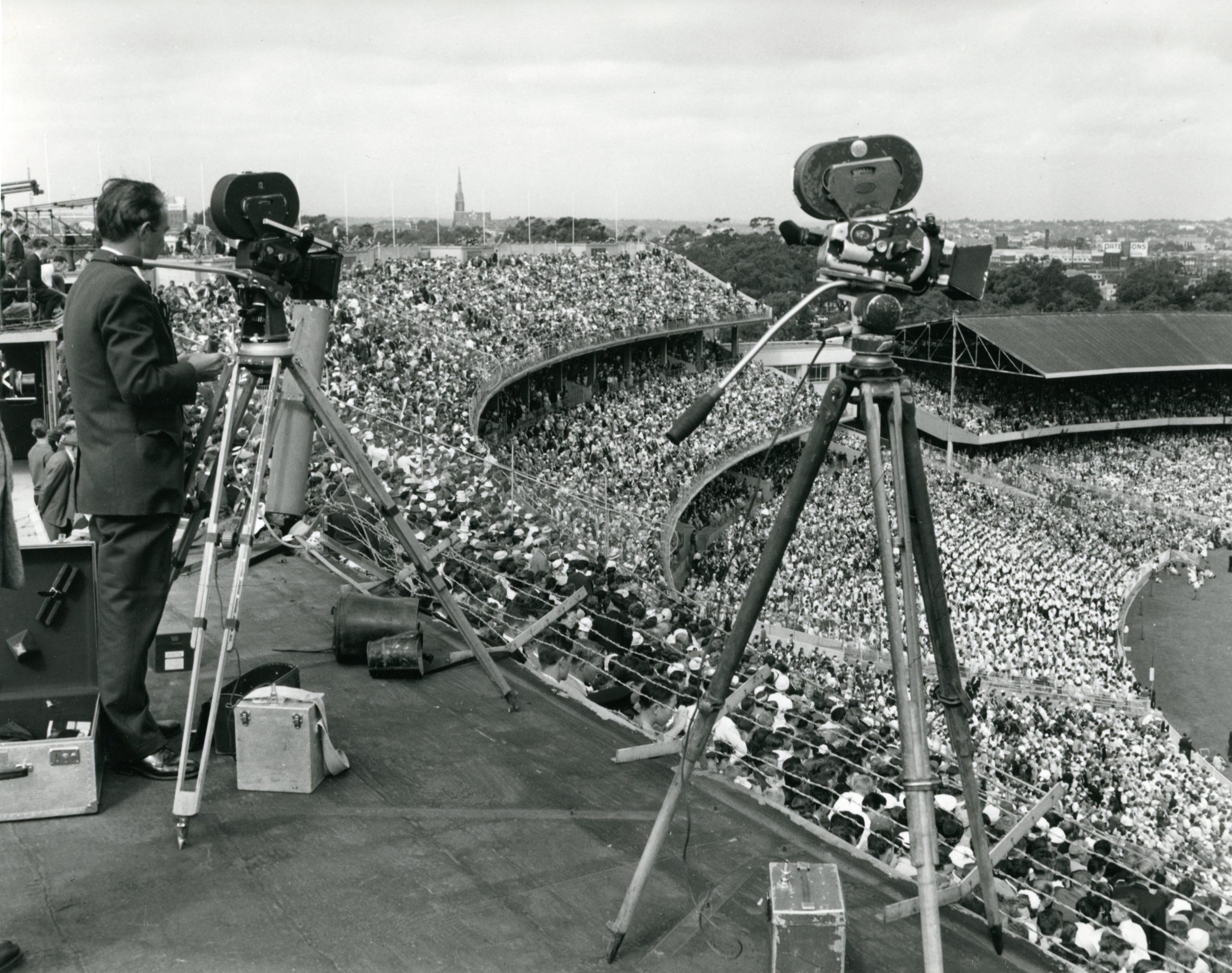Embracing the New
August 8, 2022
Categories: Billy Graham
So many exciting new things are happening at the Billy Graham Library this year. Among new events that are being scheduled for the remainder of the year, there are many physical changes on the property as well. A new Archive and Research Center is in the final stages before opening, to be used to research Mr. Graham’s seven decades of ministry materials and memorabilia. A new meeting space attached to the Library building itself is also in the works to hopefully open later in the year. And, finally, the new updated Journey of Faith with new displays, lighting, and technology upgrades will be opening later in the summer. With all of these new opportunities in the works, it is a great reminder of Billy Graham and his continued mission to share about the new life found in Christ, the change He can make in your life, and the many ways Mr. Graham used new cutting-edge techniques to spread the Gospel of Jesus Christ.
Billy Graham’s primary message to all of the world was a new life that could be acquired through a relationship with God because of the work Christ did on the cross. 2 Corinthians 5:17 tells us: “Therefore, if anyone is in Christ, he is a new creation. The old has passed away; behold, the new has come” (ESV). God’s plan for us to become a “new creation” through a “new life” was the driving force behind all of Mr. Graham’s messages.
Billy Graham not only talked about new things, but he used new technologies and techniques to spread the Gospel. In 1951, when television was still a new technology early in his ministry, Billy Graham and his team harnessed the power of that technology for a televised Hour of Decision program that reached millions of people across the country.

Many of the Crusades were also televised in order to reach the crowds of people who wanted to attend but couldn’t make it into the overflowing stadium events. In 1959, when Billy Graham held Crusade events across Australia, he telecast the Crusade from Melbourne back to the United States. He recounts in his autobiography, Just As I Am, “During this time, we also went on television with a special program Cliff [Barrows] directed, offering a phone-in number at the end of the show for people desiring spiritual counseling. The second night our meeting was telecast, 10,000 callers overwhelmed the Melbourne exchange’s automated system, with hundreds of those callers professing faith in Jesus Christ. Offering phone counseling in conjunction with television broadcasts later became a regular part of our televised Crusades in the United States.”

Even as he became elderly, Billy Graham didn’t stop looking for new ways to share the Gospel through advancing technology. In 1998, he was invited to speak at a TED Conference, the first person ever invited to speak from a religious perspective. In his autobiography, he remembers, “We live in a rapidly changing world, and I have always believed that Christians should make use of every new means God gives us for extending the message of the Gospel. After much prayer I decided to speak from Psalm 23 on the spiritual questions that science and technology cannot answer… One person I met at the TED Conference was Steve Case, the founder of America Online, who later committed his life to Christ and has become a good friend.” Billy Graham later participated in an online auditorium on America Online to answer questions submitted via the chat. He marveled at the connectivity the internet could provide and the opportunities it gave to share the Gospel.
It is true that new opportunities or change can sometimes be scary, but Billy Graham maintained a focus throughout his ministry on seeking out where change was happening and exploring how that new thing could be used to share the Gospel, even to the remotest parts of the planet. While technology continued to advance around him, though, his simple message of the new person one can be in Christ never changed and continues to serve as his legacy of how one person from seemingly ordinary circumstances can impact the world when truly dedicated to God’s purpose.